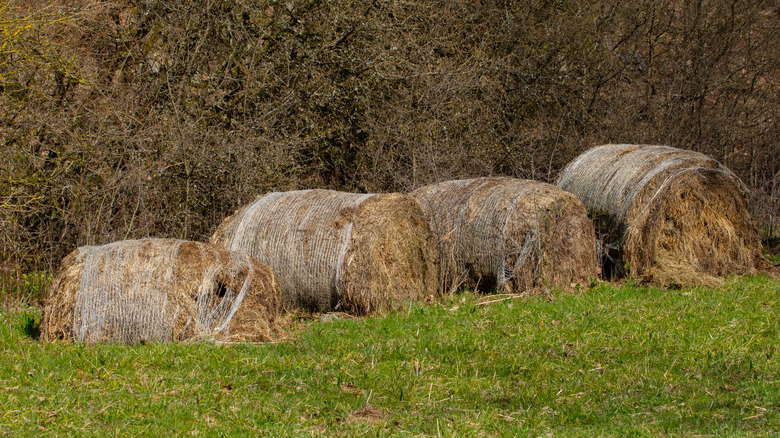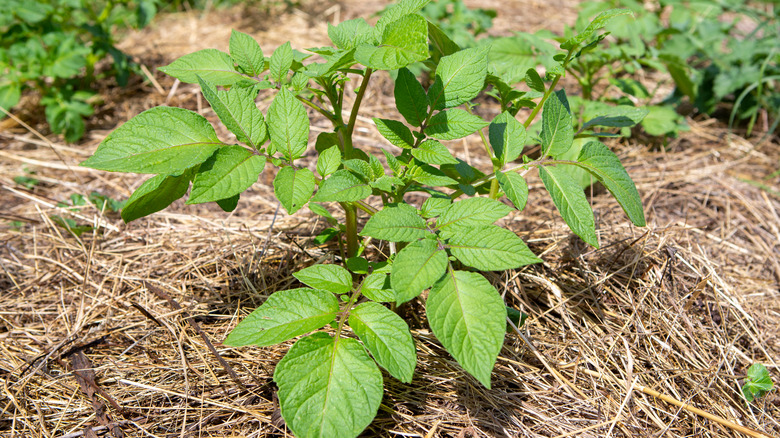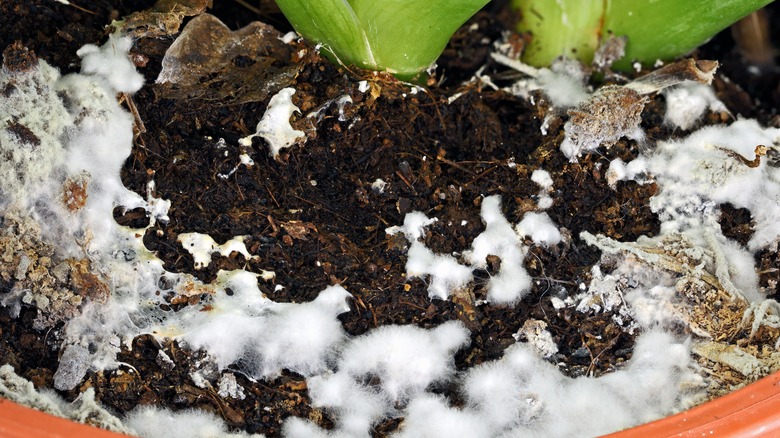Is Moldy Hay The Secret Weapon Your Lawn And Garden Need To Thrive?
Mold isn't something you usually turn to when you want to improve your lawn and garden; it's usually something you run far away from. But some types of mold are actually beneficial to your garden and will make it grow better over time. When you allow good mold to function as nature intended, you'll see all sorts of improvements.
Many gardeners use hay as mulch for their garden beds. Hay can become moldy if left moist for too long, but rather than throw it out, you can utilize it to make plants healthier and look better than ever. Knowing how to use what the garden gives you will help you use your resources wisely and may even help you save money by not having to buy fertilizer.
It's important to note that even though mold can be good for the garden, it's rarely good for you. Always wear gloves and a protective mask when handling it so you don't breathe in spores. Breathing it in could cause mild to severe asthma symptoms, which is especially dangerous to those who already have asthma. Be sure to take care of yourself as you care for your garden.
Using moldy hay to benefit your plants
First thing is first: Why would you use moldy hay over regular hay? After all, both are used for composting, mulching, and fertilizing. The simple answer is because it works just as well, and is often cheaper than regular hay. If you have a small farm, it's a great way to repurpose hay that has gone bad. If you don't have a farm, you can often buy moldy hay for a very small price or even get it free. Simply advertise your need on Craigslist, put an ad up at feed stores, or see if anyone is getting rid of it on Facebook Marketplace.
Once you get it, you can utilize this valuable resource as fertilizer. For example, you can use moldy hay on your lawn to help it grow taller and stay healthy. To do this, place small bunches of hay all over your lawn. Remove the bag from your lawnmower and mow over your lawn, making sure the hay gets spread out. The mower will cut the hay into small pieces that will break down and begin feeding your lawn.
You can also use it in flower beds, raised beds, containers, and anywhere else you have plants. Pile the moldy hay around two inches high to give your plants a thick layer of mulch. Mulches made of organic material will break down over time, and hay is a great one to use since it's so full of nutrients.
Understanding good and bad mold
If you spot mold on your sandwich, you'll likely throw the whole thing away. But just because you spot mold on your hay doesn't mean you need to treat it like a bad lunch. Plenty of mold is good for the garden and even necessary in some cases. But there are both good and bad molds to look out for.
There are two types of beneficial fungi, called mycorrhizae and saprophytes. The former lives with other living organisms for mutual benefits, and the latter can be found on decaying matter and will further break it down into the soil. These two are large categories of fungi you could spend a lifetime studying, but what you need to know is that the saprophytes are likely what you'll find in your hay. More specifically, you might see fungi called Penicillium, Aspergillus, and Fusarium, which need 20 to 30% moisture to grow.
The harmful mold is mycotoxins, which is the kind you find on a sandwich. This large category of fungi thrives in very moist or wet conditions. If the hay is only somewhat damp or dry, it's likely a good mold. If it's moist or wet, it's probably bad. A bad mold to look out for is white mold, which can spread to your grass and garden and kill all your plants.


